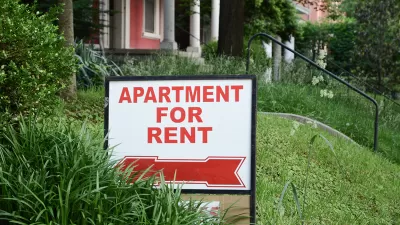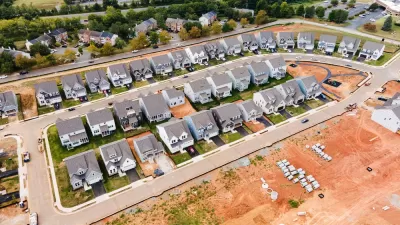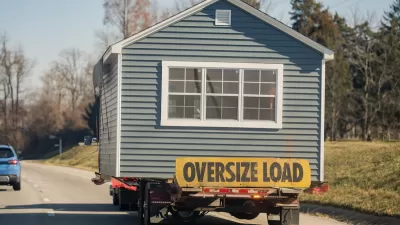High housing costs and low supply are making it harder for American families to move as household dynamics and job opportunities change.

Under current housing market conditions, writes Emily Badger in The New York Times, “The simplest and most affordable decision for many Americans will be to stay put — even if their homes become too small, too big, too crowded, too far from work, too isolated from family, or too much to maintain.”
This could pose a problem for the economy, Badger writes, as households find it harder to “change their homes to match their changing lives” and workers have a hard time finding homes near the best job opportunities. “In the mid-1980s, about one in five people in America moved annually, most of them within the same county. By 2021, that number had fallen to one in 12.” Today, “New mortgage applications and home sales have fallen. Money spent remodeling housing has soared. And renters are renewing their leases at record levels.”
Badger notes that “today the most prosperous parts of the country also have the most expensive housing. That deters people from moving where they might find better jobs, ultimately constraining America’s economic growth, economists say.”
As the article points out, “All of this matters, he said, not just because people need to move for better jobs, or better-fitting homes. America remains deeply segregated by race and income, and research shows that the neighborhoods where children grow up influence their fortunes in life.”
FULL STORY: When the Best Available Home Is the One You Already Have

Planetizen Federal Action Tracker
A weekly monitor of how Trump’s orders and actions are impacting planners and planning in America.

Congressman Proposes Bill to Rename DC Metro “Trump Train”
The Make Autorail Great Again Act would withhold federal funding to the system until the Washington Metropolitan Area Transit Authority (WMATA), rebrands as the Washington Metropolitan Authority for Greater Access (WMAGA).

The Simple Legislative Tool Transforming Vacant Downtowns
In California, Michigan and Georgia, an easy win is bringing dollars — and delight — back to city centers.

Albuquerque’s Microtransit: A Planner’s Answer to Food Access Gaps
New microtransit vans in Albuquerque aim to close food access gaps by linking low-income areas to grocery stores, cutting travel times by 30 percent and offering planners a scalable model for equity-focused transit.

This City Will Pay You to Meet Your Neighbors
A North Kansas City grant program offers up to $400 for residents to throw neighborhood block parties.

Commentary: Our Silence Will Not Protect Us
Keeping our heads down and our language inoffensive is not the right response to the times we’re in. Solidarity and courage is.
Urban Design for Planners 1: Software Tools
This six-course series explores essential urban design concepts using open source software and equips planners with the tools they need to participate fully in the urban design process.
Planning for Universal Design
Learn the tools for implementing Universal Design in planning regulations.
Smith Gee Studio
City of Charlotte
City of Camden Redevelopment Agency
City of Astoria
Transportation Research & Education Center (TREC) at Portland State University
US High Speed Rail Association
City of Camden Redevelopment Agency
Municipality of Princeton (NJ)





























